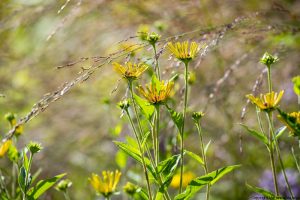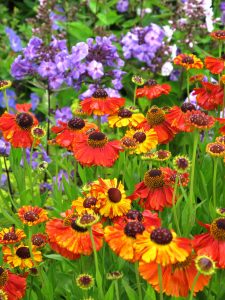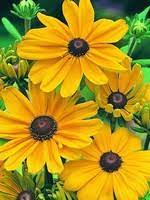Gardening is satisfying in so many ways and it develops some desirable personality traits – such as generosity, patience and perseverance – although some would say I’m a work in progress! You’re likely to be in tune with nature, if you garden, and that helps your humility because most gardeners realise that they’re not in charge of the planet. You need more humility and perseverance than you used to, because gardening is harder than ever due to recent climate change. We no longer have reliable weather patterns that deliver steady rainfall, ambient summer temperatures, winter wet and a cold winter. We’re more prone to extremes, whether it’s deluges of heavy rain, higher temperatures or drought.
These changes are taking their toll on our garden plants. Borders always tended to look ragged in August, when repeat-flowering roses were resting, foliage was flagging and touches of autumnal brown were creeping in. I used to call this period the ‘dog days of August’ because much of the garden looked lacklustre, but now this well-documented decline is happening in July – a full four weeks earlier. There’s no need to panic though. Gardens always revive once September arrives. Evenly balanced days and nights deliver reviving morning dews. The crystal-clear light enhances colour. It’s almost like flicking a switch. There are tweaks that help, of course, and the best way of freshening up your planting is to nip out every faded leaf and seedhead.

The best solution is to add some extra plant sparkle and dazzle. I have a winning combination by my garden gate that never fails to please, whatever the weather throws at it. I grow one of the few shrubby umbellifers, an evergreen with radiating lime-yellow heads. It’s Bupleurum fruticosum, or shrubby hare’s ear. It’s not too well known, but this large Mediterranean shrub makes a large roundel of leathery olive-green foliage, topped by radiating umbels. It needs an open sunny site and, although it’s recommended for exposed spots, I find that winter winds damage the branches. It gets pruned every two or three years, not too radically though, and I tend to do this in spring just in case there’s a hard winter.
When I return home on a warm summer’s day, it’s the plant equivalent of fizzy lemonade – fresh and zingy. It supports a hard-to-find clematis with chocolate-brown flowers and I’m hoping that Clematis tibetana subsp. vernayi ‘Glasnevin Dusk’ will be more available soon. A clematis nurseryman scalped my plant last summer, for cuttings!
Close by, I grow an herbaceous non-climbing clematis named ‘Cassandra’. The rich-blue, reflexed flowers, rather similar to hyacinth florets, are sweetly fragrant. There are many of these late-summer, heracleifolia-type clematis on offer, but ‘Cassandra’ swoons rather than flops and its colour strays towards handsome sapphire-blue. It’s not as tall as many others either. They all die down as winter approaches. Cut the stems back carefully in late winter, to a height of six inches or so, so that you preserve the lower buds. If you cut back too low you may lose this late-summer jewel, as I found to my cost! If you need more, split the clumps in early spring just as the buds begin to break.
The mallow family also flower well now and I’m fond of a new one named Lavatera BLUEBIRD, because the lilac-pink flowers have pink veins and a hibiscus-like middle. This was raised by Renault Nurseries of France, but it has been available from Thompson & Morgan and Hayloft Plants in the past. It smoulders in borders, producing a succession of flowers for several weeks. It has proved hardy here, but it’s not cut back hard in spring. I treat this like a fuchsia and trim back to breaking buds in late April. It has a neater habit and a better colour than most shrubby mallows.
Another lifesaver is the perennial sweet pea, Lathyrus latifolius, also known as the everlasting sweet pea. It returns year after year and, if dead-headed, it will produce flowers for many a week from July onwards. Admittedly, it’s not fragrant, like annual sweet peas are, but it still cuts well and produces an average of ten flowers per stem. These are arranged on one side of the stem only and they go very well with scabious flowers.

The everlasting sweet pea comes in three colours, white, pale-pink and bright-pink. Do bear in mind that white is the trickiest colour of all to place in brighter spots, so only use it with discretion. Like all white flowers, it has less pigment in the petals and this causes the flowers to brown as they die – not a good look. This easy sweet pea is a willing self-seeder, too willing if you ask me, so removing the pods is a good idea. Here it creeps up a rambling rose, which has finished flowering, and it sprawls through part of the border. It flowers later than the untidier Lathyrus grandiflora., but both are easy and far less trouble to grow than annual sweet peas (L. odoratus).
I have a love-hate relationship with colchicums, also called autumn crocus. These produce naked ladies, goblets of white or pink flowers that emerge without any leafy surround. Most flower in September, but they are not easily placed because most have large leaves that emerge early. These fade and brown for at least four months of the year and they are hideous – no other word will do. However, Colchicum autumnale ‘Nancy Lindsay’ has foliage that disappears by midsummer. Then the bright-pink smaller flowers appear in August and one bulb can produce a succession of twenty flowers.

I cannot get enough of her slender presence, but then the elegant Nancy (confidante of Major Lawrence of Hidcote Manor) could never produce those plumptious flowers that some do. Hers are more champagne flute. ‘Nancy Lindsay’ was awarded an AGM for her reliable qualities and the lady herself collected it from Romania in 1936. If you only have room for one, she’s it.
One thing you cannot fail to notice, as summer wears on, is the shift in the colour palette. The pastels of summer give way to golds and oranges and there are four torchbearers lighting the way to autumn. The first is a heliopsis named ‘Summer Nights’ and this has small bright-yellow flowers, with mounded red middles, held on a candelabra of ribbed black stems above dark foliage. The next is a dazzler that morphs between orange, yellow and brown and it’s Helenium ‘Sahin’s Early Flowerer’. It precedes many other heleniums and is less demanding on moisture.
The third is the upright, four-foot-high Rudbeckia subtomentosa ‘Henry Eilers’, a spoon-billed yellow daisy with brown middles. Lastly, I adore Ratibida pinnata, an equally tall yellow daisy with divided foliage. Known as the yellow cone flower, this daisy has delicate yellow petals that swoon downwards to expose a green middle that darkens as the mini flowers are pollinated. The latter’s hard to find, but worth pursuing.

I grow golden-yellow gloriosa daisies from seed every year, forms of Rudbeckia hirta. My first choice is always ‘Indian Summer’ (seeds sold by Suttons) because the large level yellow daisies resemble spinning plates. Although listed as annual, these often come through the winter to bloom again. Try to add blues and purples to your golden yellows and oranges and Aconitum ‘Sparks Variety’, with branches that radiate at 45 degrees, would be my choice. Like all aconitums it’s toxic, but it provides purple-blue flecks of colour over many weeks.



